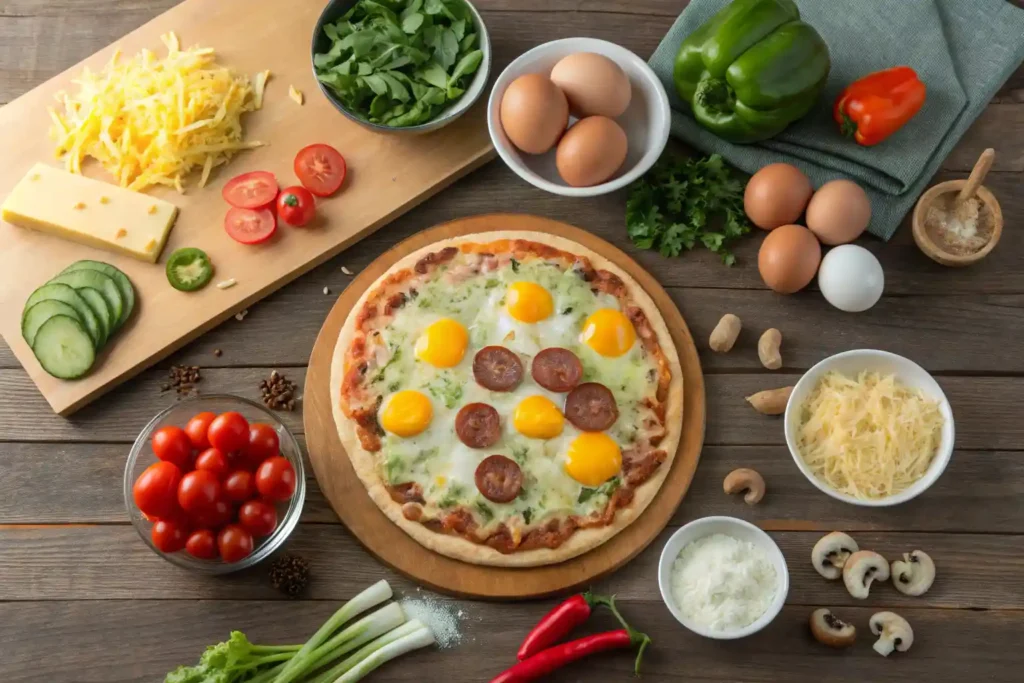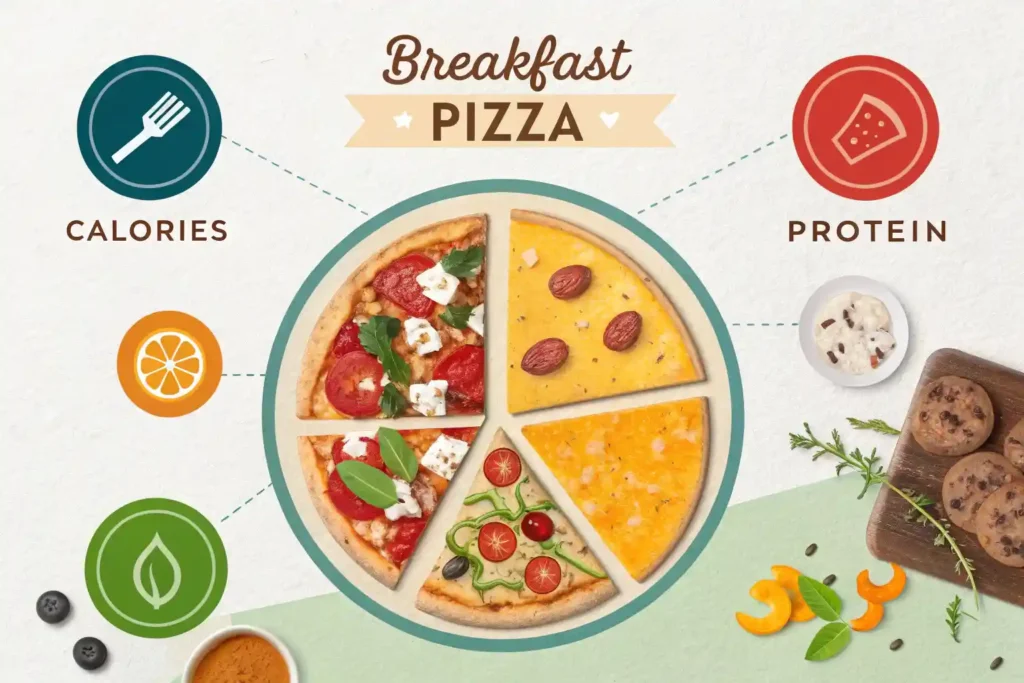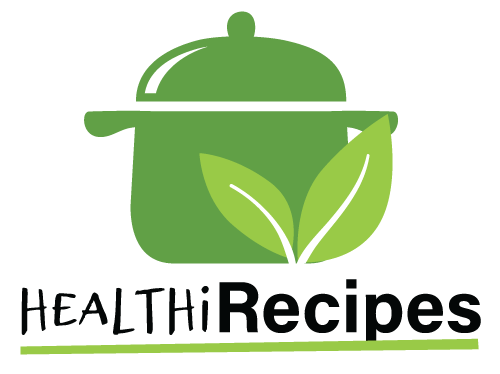Breakfast pizza is a fun and nutritious way to start the day, especially for kids heading to school. This article explores the ingredients, benefits, and preparation of breakfast pizza, making it a perfect choice for busy mornings.
Table of contents
1. What Does Breakfast Pizza Contain?

Breakfast pizza is a versatile dish that can be customized to suit various tastes and dietary needs. Here are the key components typically found in breakfast pizza:
- Crust:
- The base of breakfast pizza can vary from traditional pizza dough to whole wheat or gluten-free options.
- Some recipes even use tortillas or English muffins for a quick and easy alternative.
- Sauce:
- While tomato sauce is common, many breakfast pizzas use alternatives like cream cheese, pesto, or salsa to add flavor.
- A light spread of olive oil or butter can also serve as a base.
- Cheese:
- Cheese is a crucial ingredient, providing creaminess and flavor.
- Common choices include mozzarella, cheddar, or feta.
- For a healthier option, consider using reduced-fat cheese or dairy-free alternatives.
- Toppings:
- Breakfast pizza can be topped with a variety of ingredients, such as:
- Eggs: Scrambled, fried, or poached eggs are popular choices.
- Meats: Options like bacon, sausage, or ham add protein and flavor.
- Vegetables: Fresh vegetables like spinach, bell peppers, onions, and tomatoes can enhance nutrition and taste.
- Herbs and Spices: Fresh herbs like basil or parsley, along with spices like black pepper or red pepper flakes, can elevate the flavor profile.
- Breakfast pizza can be topped with a variety of ingredients, such as:
2. How to Have Pizza for Breakfast?
Incorporating breakfast pizza into your morning routine can be both fun and easy. Here are some tips to make breakfast pizza a staple in your household:
- Meal Prep:
- Prepare the crust and toppings in advance to save time on busy mornings.
- You can make several breakfast pizzas on the weekend and freeze them for quick reheating during the week.
- Customize for Kids:
- Involve your children in the preparation process by letting them choose their favorite toppings.
- This not only makes breakfast pizza more appealing but also encourages kids to eat healthier.
- Serve with Sides:
- Pair breakfast pizza with healthy sides to create a balanced meal.
- Consider serving it with fresh fruit, yogurt, or a smoothie for added nutrition.
- Make It Fun:
- Use cookie cutters to create fun shapes with the pizza, making it more exciting for kids.
- You can also create a breakfast pizza bar, allowing everyone to build their own pizza with their preferred toppings.
3. What Brand Were School Pizzas?
School pizzas have a long history, and several brands have become synonymous with school lunches. Here’s a look at some of the most popular brands that supplied breakfast pizzas to schools:
- Tony’s:
- Known for its rectangular pizzas, Tony’s has been a staple in school cafeterias for decades.
- Their breakfast pizzas often feature a combination of eggs, cheese, and meats.
- Red Baron:
- Red Baron offers a variety of frozen pizzas, including breakfast options that are easy to prepare.
- Their breakfast pizzas typically include scrambled eggs and sausage on a crispy crust.
- DiGiorno:
- While primarily known for their frozen pizzas, DiGiorno has also ventured into breakfast pizzas.
- Their products often emphasize quality ingredients and convenience.
- School District Brands:
- Many school districts have their own brands or partnerships with local pizzerias to provide breakfast pizza options.
- These pizzas are often tailored to meet nutritional guidelines and cater to student preferences.
4. How Many Calories Are in a School Breakfast Pizza?

Understanding the calorie content of breakfast pizza is essential for parents and educators who want to provide nutritious meals for children. The calorie count can vary significantly based on the ingredients and portion sizes. Here’s a breakdown of what to expect:
- Average Calorie Count:
- A typical slice of school breakfast pizza can range from 200 to 300 calories.
- This estimate can vary based on the thickness of the crust, the amount of cheese, and the type of toppings used.
- Homemade vs. Store-Bought:
- Homemade breakfast pizza allows for better control over ingredients, which can lead to a healthier option.
- For example, using whole wheat crust, low-fat cheese, and plenty of vegetables can reduce the calorie count while increasing nutritional value.
- Store-bought options may contain preservatives and higher fat content, which can increase calorie counts. Always check the nutrition label for accurate information.
- Portion Sizes:
- Portion sizes play a crucial role in calorie intake.
- A standard serving size for breakfast pizza is typically one slice, but many kids may eat more than one slice, especially if they are active.
- It’s important to balance portion sizes with other breakfast items to ensure a well-rounded meal.
- Caloric Breakdown:
- Here’s a rough breakdown of calories in a typical slice of breakfast pizza:
- Crust: 80-120 calories (depending on thickness and type)
- Cheese: 50-100 calories (based on type and amount)
- Toppings: 30-80 calories (meats and vegetables)
- Sauce: 10-30 calories (if used)
- Here’s a rough breakdown of calories in a typical slice of breakfast pizza:
5. Is Pizza Unhealthy for Breakfast?
The perception of pizza as an unhealthy breakfast option is common, but it’s essential to consider the ingredients and preparation methods. Here are some points to consider:
- Nutritional Value:
- Breakfast pizza can be a nutritious meal if made with wholesome ingredients.
- Incorporating whole grains, lean proteins, and fresh vegetables can enhance its nutritional profile.
- For example, using a whole wheat crust, eggs, turkey sausage, and a variety of vegetables can create a balanced meal.
- Common Misconceptions:
- Many people associate pizza with high fat and calorie content, but breakfast pizza can be tailored to be healthier.
- The key is to focus on the quality of ingredients rather than the dish itself.
- Homemade versions allow for more control over what goes into the pizza, making it easier to create a healthier option.
- Balance and Moderation:
- Like any food, breakfast pizza should be consumed in moderation.
- Pairing it with fresh fruit or a side of yogurt can create a more balanced meal.
- It’s also important to consider the overall diet of the child throughout the day.
- Healthier Alternatives:
- If you’re concerned about the healthiness of traditional breakfast pizza, consider these alternatives:
- Use cauliflower crust for a lower-carb option.
- Opt for low-fat cheese or dairy-free alternatives.
- Load up on vegetables to increase fiber and nutrients.
- If you’re concerned about the healthiness of traditional breakfast pizza, consider these alternatives:
6. Does School Pizza Have Protein?
Protein is an essential nutrient for growing children, and breakfast pizza can be a good source of protein if prepared correctly. Here’s what you need to know:
- Protein Content:
- A typical slice of breakfast pizza can contain anywhere from 10 to 15 grams of protein, depending on the toppings used.
- Ingredients like eggs, cheese, and meats contribute significantly to the protein content.
- Key Protein Sources:
- Eggs: A common topping for breakfast pizza, eggs are an excellent source of high-quality protein.
- Meats: Options like bacon, sausage, or ham can boost protein levels, but it’s essential to choose leaner cuts to keep the meal healthier.
- Cheese: Provides both protein and calcium, making it a valuable ingredient in breakfast pizza.
- Enhancing Protein Content:
- To increase the protein content of breakfast pizza, consider adding:
- Extra eggs: Scrambled or poached eggs can be added on top.
- Lean meats: Turkey sausage or chicken can be healthier alternatives to traditional pork sausage.
- Legumes: Adding black beans or chickpeas can provide additional protein and fiber.
- To increase the protein content of breakfast pizza, consider adding:
- Importance of Protein:
- Protein is crucial for children as it supports growth, muscle development, and overall health.
- Including protein-rich foods in breakfast can help keep kids full and energized throughout the morning.
7. Recipe: Breakfast Pizza Ingredients and Directions
Creating a delicious breakfast pizza at home is simple and allows for customization based on your family’s preferences. Here’s a straightforward recipe to get you started.
Ingredients
- For the Crust:
- 1 pre-made pizza crust (store-bought or homemade)
- Optional: Whole wheat or gluten-free crust for healthier options
- For the Sauce:
- 1/2 cup pizza sauce or marinara sauce
- Optional: 1/4 cup cream cheese or pesto for a different flavor
- For the Toppings:
- 4 large eggs
- 1 cup shredded cheese (mozzarella, cheddar, or a blend)
- 1/2 cup cooked and crumbled breakfast sausage or diced ham
- 1/2 cup chopped vegetables (bell peppers, onions, spinach, or tomatoes)
- Salt and pepper to taste
- Optional: Fresh herbs (basil or parsley) for garnish
Directions
- Preheat the Oven:
- Preheat your oven to 425°F (220°C).
- Prepare the Crust:
- If using a pre-made crust, place it on a baking sheet or pizza stone.
- If making your own, roll out the dough to your desired thickness.
- Add the Sauce:
- Spread the pizza sauce evenly over the crust.
- If using cream cheese or pesto, spread it as a base layer.
- Add the Toppings:
- Sprinkle half of the shredded cheese over the sauce.
- In a bowl, whisk the eggs with salt and pepper.
- Pour the eggs evenly over the pizza.
- Add the cooked sausage or ham, followed by the chopped vegetables.
- Top with the remaining cheese.
- Bake the Pizza:
- Place the pizza in the preheated oven and bake for 12-15 minutes, or until the crust is golden and the cheese is bubbly.
- Garnish and Serve:
- Remove the pizza from the oven and let it cool for a few minutes.
- Garnish with fresh herbs if desired, slice, and serve warm.
Conclusion
Breakfast pizza is an excellent addition to school menus, providing a fun and nutritious meal option. By incorporating ingredients like scrambled eggs and cheese, schools can offer a dish that appeals to students while meeting nutritional guidelines. For more ideas on breakfast options, consider exploring healthy breakfast burrito recipes or quick delicious breakfast pizza. These recipes can enhance the breakfast offerings in schools, ensuring students start their day with energy. Additionally, for those looking to purchase ready-made options, check out Guinther’s School Breakfast Pizza. This product can simplify meal preparation while maintaining quality and taste. Embracing breakfast pizza in school menus not only satisfies students’ taste buds but also promotes healthier eating habits.
FAQs
1. What does breakfast pizza contain?
Breakfast pizza typically contains a crust, sauce, cheese, and various toppings such as eggs, meats, and vegetables. The ingredients can be customized based on personal preferences and dietary needs.
2. How to have pizza for breakfast?
To enjoy pizza for breakfast, consider meal prepping by making breakfast pizzas in advance. You can also involve kids in the preparation process, allowing them to choose their favorite toppings. Pairing breakfast pizza with healthy sides like fruit or yogurt can create a balanced meal.
3. What brand were school pizzas?
Popular brands that supplied breakfast pizzas in schools include Tony’s, Red Baron, and DiGiorno. Many school districts also have their own brands or partnerships with local pizzerias to provide breakfast options tailored to student preferences.
4. How many calories are in a school breakfast pizza?
A typical slice of school breakfast pizza can range from 200 to 300 calories, depending on the ingredients and portion sizes. Homemade versions can be healthier and lower in calories by using whole grains and fresh toppings.

